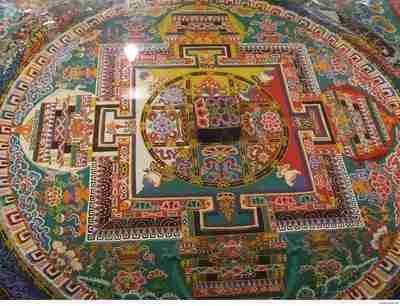Tibet, the “Roof of the World” and Lhasa, the “Forbidden City” had held great fascination for travel adventurers and missionaries all through the nineteenth and twentieth centuries. Rugged terrain, inhospitable high altitude climate and primitive communications combined to deter and defeat all clandestine attempts to be simply the first foreigner in Lhasa.
Till the 1960s, the shortest and comparatively the easiest land route lay from Kalimpong or Gangtok over the Jelap La, up the Chumbi Valley to Gyantse and less than a weak later arriving at Lhasa, the ultimate destination. For those very reasons, the Chumbi Valley was kept under constant surveillance by Tibetans (subsequently by the Chinese) and almost every incursion was thwarted at Yatung itself, the first township in the Chumbi Valley.
Lhasa and the ladies
The two names of trespassers that come to my mind always are of Annie Taylor and Alexandra David-Neal. The former was a Christian missionary member who wanted to live in Lhasa and believe it or not, to fulfill her divine urge to proselytise Buddhist monks to Catholicism, she made at least four attempts to sneak into Chumbi, but was intercepted each time at Yatung itself and escorted back to Kalimpong.

Marvelling at her perseverance, the Tibetan authorities finally allowed her to set up a dispensary at Yatung where she minded the sick, till her death in the 1920s. Alexandra David-Neal on the other hand, wanted to reach Lhasa because she was of her own volition, a devout Buddhist. An elegant French lady, a talented stage actress, a post-graduate in philosophy from Sorbonne in Paris, Alexandra was infatuated with Buddhism.
She had had an audience with the thirteenth Dalai Lama in 1911, during his visit to Kalimpong. The Dalai Lama was most impressed by the depth of her knowledge of Buddhism but nevertheless, refused her permission to enter Tibet. Alexandra next befriended the King of Sikkim, a product of Harrow who advised her to take a “retreat” to further master the precepts and practices of Buddha’s teachings.
So she spent two solitary years in a cave in northwest Sikkim, doing just that. Perhaps it was during this period that she met Yongden, a Lepcha (the original Sikkimese tribe) whom she adopted her son. She spoke Sikkimese and Tibetan dialects fluently and attained deep insight into Yoga and Tantra.
Her purpose to enter the Chumbi Valley was to ultimately reach the Drepung monastery, on the outskirts of Lhasa and live in the company of enlightened Lamas.

Her purpose to enter the Chumbi Valley was to ultimately reach the Drepung monastery, on the outskirts of Lhasa and live in the company of enlightened Lamas. But authorities would not relent. Undeterred, in February 1921 she travelled to Peking and made four unsuccessful attempts to reach Lhasa, first via Outer Mongolia and twice through Sechuan. She finally entered the Yunan province and crossing the Mekong River near the China-Burma-India tri-junction, she headed due west to Lhasa.
This was a route no one had ever attempted before and therefore not under surveillance. Yongden was in a Lama’s disguise and Alexandra, a Tibetan beggar’s. At last, three years later and after 8,000 miles, almost all of it on foot, the duo entered Lhasa in Feb 1924.
Alexandra was 54 years by then and became the first woman of any foreign nationality to set eyes on Pota La. Two months later, Alexandra felt that their disguise might be blown. So she made haste from Lhasa to Gyantse where she revealed her identity to David Macdonald, the head of the British Trade Agency.
For diplomatic reasons, Macdonald had no choice but to secretively extrude the duo to India the fastest via the Chumbi Valley. Now forty years later in 1962, the Chumbi Valley was firmly shuttered down to the outside world by the Chinese. The PLA maintained a sizeable presence in the Valley and axiomatically the Indian Army in Sikkim. Both sides believed that not a bird could fly undetected, across the ridge separating the two nations. That complacency was shattered one misty day in 1981.
The move
Twenty soldiers of the Indian Army led by a smart Captain set out on a routine four-day patrol. For the first day they were to go due north, keeping a thousand metres from the International border along the Chumbi-Sikkim crest. It was a misty day which soon turned into fog so dense, that you could not spot the man five metres ahead. By the afternoon, they expected to reach a rock cliff-face at about 15,000 ft ASL from where they were to go due west for an hour before bedding for the night. That is precisely what the young Captain did using his prismatic compass, unbeknown of course that the compass was faulty by 180 degrees.
There was no fog the next morning, and they soon hit the track which by about 3 pm would take them to a tributary of the Teesta River. Once there, they would turn left and in an hour hit the bridge on the Teesta, at Mangan town. All this while they were walking right into the sun but never mind, the compass pointed west, to Mangan. Shortly they hit a tributary, turned left and soon heard cheering and laughter.
Surely that was the Border Roads detachment at the Teesta Bridge making merry? Yes, they were having a volleyball match and the patrol marched past them smartly, heading for Magan. As the last Indian soldier marched past, the referee gathered his wits. He blew the whistle and gesticulating excitedly, brought all activity to end. The Volley ball ground was in fact the PLA helipad at Yatung in the Chumbi Valley. The India troops were marching nonchalantly, on the road to Lhasa!


